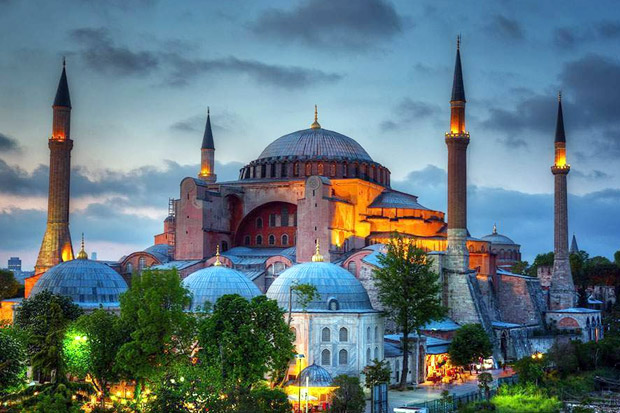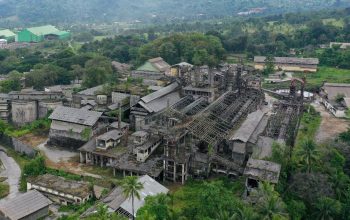Introduction Hagia Sophia, known as Ayasofya in Turkish, stands as one of the most iconic structures in the world, located in Istanbul, Turkey. Its rich history and architectural brilliance make it a symbol of the cultural and religious transformation of the city formerly known as Constantinople.
Historical Background
Initial Construction: Hagia Sophia was originally constructed as a Christian cathedral by the Byzantine Emperor Justinian I in 537 AD. The name “Hagia Sophia” translates to “Holy Wisdom” in Greek.
Architectural Marvel: The building is renowned for its massive dome, which spans approximately 31 meters in diameter, an engineering feat of its time. The primary architects were Isidore of Miletus and Anthemius of Tralles.
Interior Decor: The interior of Hagia Sophia is adorned with stunning mosaics depicting Christian figures such as Jesus, Mary, and various saints, showcasing the intricate artistry of the Byzantine era.
Transformations and Functions
Byzantine Era: For over 900 years, Hagia Sophia served as the principal cathedral of Constantinople, the heart of the Byzantine Empire.
Ottoman Era: After the Ottoman conquest of Constantinople in 1453, Sultan Mehmed II converted Hagia Sophia into a mosque. Additions such as minarets, a mihrab, and a minbar were made to suit its new role as a mosque.
Museum Era: In 1935, under the leadership of Mustafa Kemal Atatürk, Hagia Sophia was transformed into a museum as part of Turkey’s secularization efforts.
Reconversion to Mosque: In July 2020, the Turkish government decided to reconvert Hagia Sophia into a mosque, a decision that sparked controversy and international reactions.
Cultural and Religious Significance
Architectural Icon: Hagia Sophia is considered the pinnacle of Byzantine architecture and served as a model for many subsequent Ottoman mosques, including the nearby Sultan Ahmed Mosque (Blue Mosque).
World Heritage Site: UNESCO has designated Hagia Sophia as part of the World Heritage Site in Istanbul, recognizing its historical and cultural importance.
Symbol of Tolerance and Change: As a building that has served multiple religions and functions over the centuries, Hagia Sophia is often viewed as a symbol of interfaith dialogue and the dynamic nature of human history.
Current Issues and Controversies
2020 Decision: The reversion to a mosque in 2020 has fueled discussions about cultural heritage preservation and the relationship between religion and state in Turkey.
Public Access: Despite its current function as a mosque, Hagia Sophia remains open to visitors from around the world, allowing them to witness its architectural splendor and understand its historical significance.
Conclusion Hagia Sophia is a monument that encapsulates the complex history of Istanbul and the rich cultural heritage of Turkey. It stands as one of the most extraordinary examples of architectural and spiritual heritage in the world, reflecting the diverse and evolving history of the region.
















